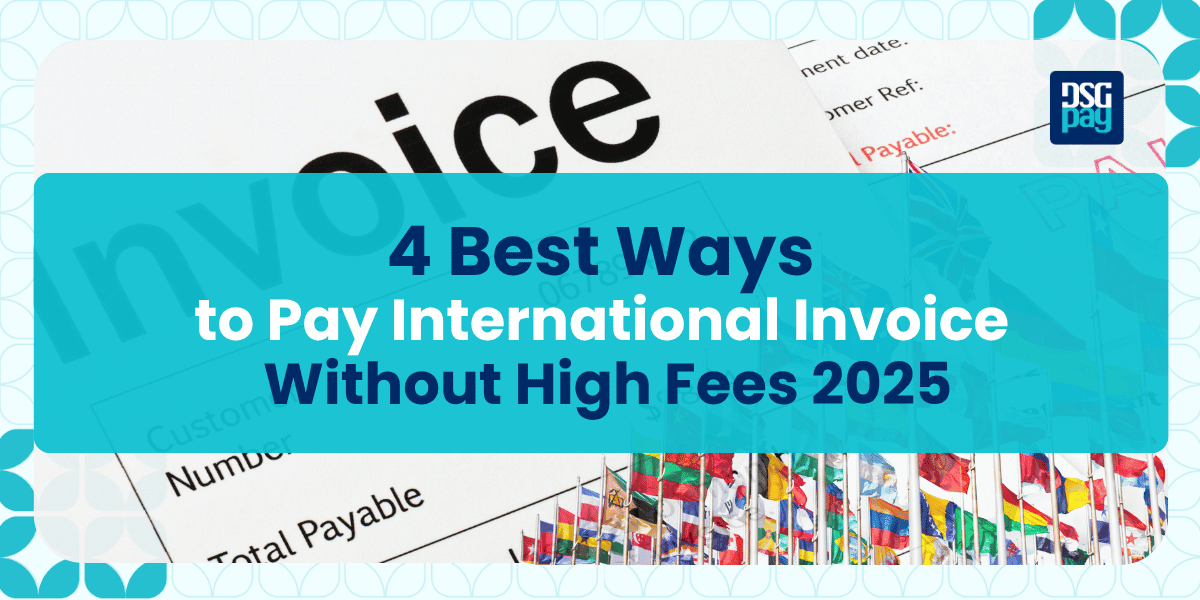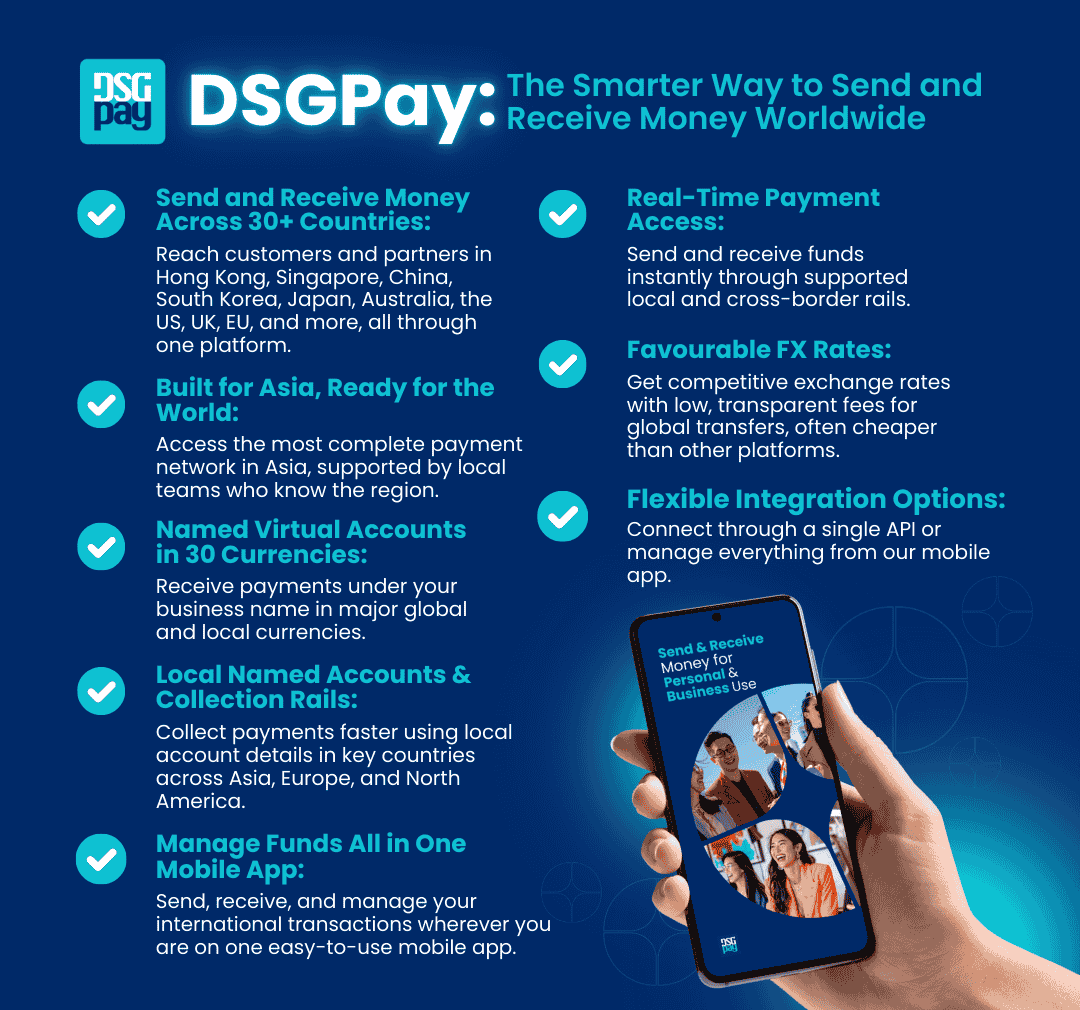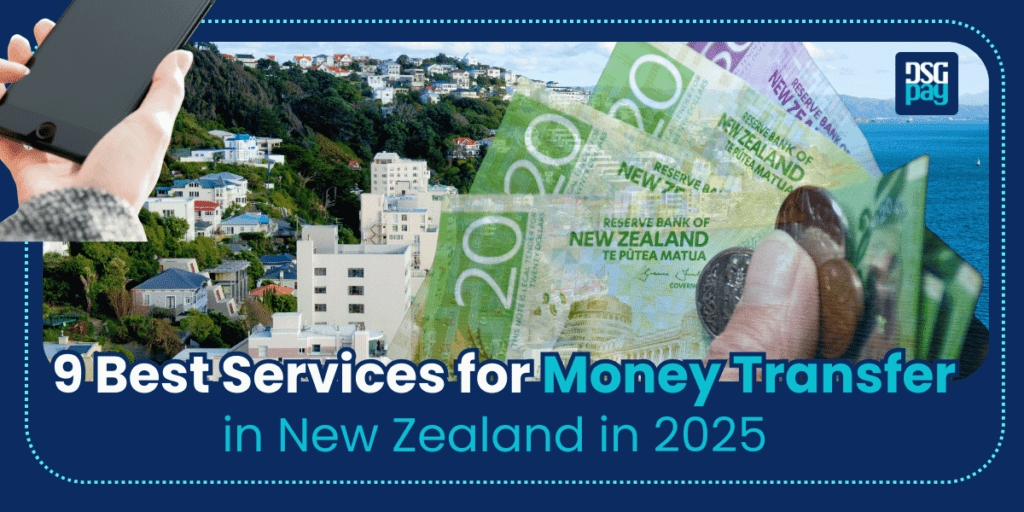If you’ve ever tried to pay an international invoice, you know it’s rarely as simple as clicking “send.”
Maybe you’re a small business owner paying a freelancer overseas, an e-commerce seller wiring money to a supplier, or part of a finance team handling multiple contractor payments at once.
Different scenarios, same pain: high fees, poor exchange rates, slow transfers, and suppliers receiving less than expected.
This guide explains what to look for in a provider, the best ways to pay international invoices, and how to save on every transaction.
Table of Contents
Key Takeaways
- Nearly 26% of U.S. business decision-makers have ended relationships with buyers or suppliers because of payment delays.
- In 2025, fintech platforms, multi-currency accounts, and local payment rails make cross-border payments faster, cheaper, and more transparent.
- Traditional SWIFT transfers are reliable but costly and slow.
- Specialist FX providers offer better rates and lower fees for large payments.
- Multi-currency accounts help avoid unnecessary conversions and extra costs.
- Global ACH and local rails make recurring payments faster and cheaper.
- Choosing the right provider can save businesses thousands annually.
Quick Comparison: Best Ways to Pay International Invoices in 2025
Finding the best way to pay international invoices depends on your business size, payment frequency, and target countries. The table below gives a quick comparison of payment methods and leading providers in 2025.
| Method | Top Providers | Main Benefit | Best For |
|---|---|---|---|
| Specialist FX Providers | XE, OFX, Convera | Better exchange rates and lower fees than banks | Businesses with frequent global transfers |
| Multi-Currency Accounts | Wise, Payoneer, PayPal, Revolut | Hold and pay in multiple currencies to avoid conversions | SMEs and freelancers managing global payments |
| Global ACH / Local Rails | Tipalti, Airwallex, Stripe | Local payments with low fees and faster settlement | Companies paying recurring supplier invoices |
| Traditional Bank Wiring (SWIFT) | HSBC, Standard Chartered, Citibank | Secure transfers through established global banking channels | Enterprises handling large or regulated payments |
Exploring the 4 Best Ways to Pay International Invoices in 2025
Here are the most popular and cost-efficient ways to pay international invoices in 2025. Each option includes top providers so you can compare and choose the one that fits your needs best.
1. Specialist FX Providers
Specialist foreign exchange providers are built to move money internationally with better exchange rates and lower fees than traditional banks. They give you more transparency and control.
Pros
- Tailored solutions for international business payments.
- Reduced risk from currency fluctuations.
- Access to expert support and market insights.
- More competitive exchange rates than traditional banks.
Cons
- Payment errors can be costly and hard to reverse.
- Regulatory and compliance requirements can cause delays.
- Transparency levels may vary between providers.
- Requires time to learn and adapt to new systems.
Popular Specialist FX Providers
| Provider | Supported Countries and Currencies | Key Features | Best For |
|---|---|---|---|
| XE | 190+ countries, 130+ currencies | – Competitive exchange rates – High transfer limits – Bulk payment capability – API integration for automation – Real-time payment tracking | Large or frequent international payments |
| OFX | 170+ countries, 50 currencies | – Multi-currency accounts – Low and transparent fees – Batch transfer options – Forward contracts for risk management – Fast transfer times – 24/7 customer support | Regular payments to suppliers or freelancers |
| Western Union Business Solutions (Convera) | 200+ countries, 130+ currencies | – Bulk payment options – Multiple payout methods – FX tools for currency management – Payment tracking features | Payments to suppliers or contractors in emerging markets |
2. Multi-Currency Accounts
Multi-currency accounts make it easier to pay international invoices by letting you hold and send funds in different currencies, helping you avoid unnecessary conversion fees with every payment.
Pros
- Increased flexibility by paying suppliers in their local currency.
- Lower foreign exchange and transaction fees.
- Easier management of international payments and cash flow.
Cons
- Exchange rate volatility can reduce the value of funds held.
- Currency options may be limited with some providers.
- Account management may require more complex tracking and reporting.
- Maintenance or holding fees may apply.
Popular Multi-Currency Providers
| Provider | Supported Countries | Key Features | Best For |
|---|---|---|---|
| Wise | 160+ countries, 54 currencies | – Real mid-market exchange rate (no markups) – Batch payments for up to 1,000 invoices – Scheduled and automated payouts – Multi-currency account | Frequent or high-volume international invoice payments |
| Payoneer | 200 countries, 150 currencies | – Multi-currency receiving accounts (USD, EUR, GBP, and more) – Low and transparent fees – Flexible payment methods – Invoice creation and email links – Integration with Shopify and accounting tools | Online sellers, freelancers, and global businesses |
| PayPal | 200+ countries, 25 currencies | – Automated billing and payment reminders – Real-time payment tracking – Multiple payment options and guest checkout – Integration with accounting software | One-off or small invoice payments |
| Revolut Business | 160 countries, 35 currencies | – Send and receive in 25+ currencies at competitive rates – Local receiving accounts – Invoicing tools with reminders – Mass payouts and expense management – Integration with Xero and QuickBooks | SMEs and startups handling multi-currency payments |
3. Global ACH / Local Rails
Global ACH or local rails use domestic clearing networks in the recipient’s country, providing a more affordable and streamlined alternative to the SWIFT network.
This method lets you pay international invoices as if they were local payments, often at a fraction of the cost.
Pros
- Lower fees.
- No intermediary deductions.
- Faster delivery in supported countries.
- Cost-effective for recurring payments.
- Reliable tracking.
Cons
- Not supported in every country.
- Requires local bank accounts on the recipient’s end.
Popular Global ACH / Local Rails Providers
| Provider | Supported Countries | Key Features | Best For |
|---|---|---|---|
| Tipalti | 196 countries, 120 currencies | – Supports multiple payment methods, including ACH and wire – Automates payables, compliance, and reconciliation – Mass payments via API or file upload | Companies managing regular international supplier payments |
| Airwallex | 200 countries, 91 currencies | – Local and global payment rails – Multi-currency accounts with local bank details – Transparent FX rates with low markups | Businesses needing fast, affordable global payments |
| Stripe | 46 countries, 135 currencies | – Global payment processing and payouts – API integrations for easy automation – Local currency settlement | Online businesses and platforms handling international transactions |
4. Traditional Bank Wiring (SWIFT)
SWIFT is the oldest and most traditional way to pay international invoices. It’s reliable, widely accepted, and offers a trusted global network, though not as fast or cost-efficient as modern alternatives.
Pros
- Secure transfers through trusted banking channels.
- Wide reach with support for most countries.
- Irreversibility can offer protection once funds are processed.
Cons
- High costs due to multiple fees and exchange rate markups.
- Slow processing times often take several business days.
- Limited transparency on the transfer’s progress and final amount.
- Complex procedures and compliance checks.
Popular Traditional Banks
| Bank | Supported Countries and Currencies | Key Features | Best For |
|---|---|---|---|
| HSBC | 57 countries, 12–20 currencies | – Secure global payment network with real-time exchange rates – 24/7 transfers and support – HSBC Global Wallet for holding multiple currencies – Payment scheduling and International Payment Tracker – Tools like HSBCnet and Global Payables for cash flow control | Large businesses making frequent international payments |
| Standard Chartered | 50+ markets, 14–20 currencies | – Multiple transfer options, including Telegraphic Transfer and Demand Drafts – Instant payments through Straight2Bank Pay platform – Integrations with Visa Direct and Wise Platform – IACH for bulk cross-border payments – Trade finance solutions, including invoice financing and LCs | Companies with suppliers in emerging markets |
| Citibank | 180 countries, 100+ currencies | – WorldLink platform for electronic and cheque payments – Real-time tracking via Citi Payment Flow Manager – Secure payments through CitiDirect – Instant collections using Request to Pay | Enterprise-level businesses managing high-value international transactions |

Factors to Consider When Choosing a Provider
Before picking a platform to pay international invoices, it’s smart to know what matters most.
Here are the main things to look at:
- Transaction Fees: Check both fixed fees and hidden exchange rate markups. Some banks add 2%–5% extra behind the scenes.
- Exchange Rate: Some providers use the mid-market rate, while others charge a spread. Even a small difference can cost a lot over time.
- Payment Speed: Faster isn’t always more expensive, but some low-cost methods can take longer to clear.
- Supported Countries and Currencies: Pick a provider that supports your vendor’s country and currency to avoid extra steps or costs.
- Security and Compliance: Use trusted, regulated providers. This protects both your money and your business reputation.
- Ease of Use: If you pay invoices often, choose a platform with a user-friendly dashboard and clear fee breakdowns.
- Vendor Experience: Consider how your supplier receives the payment. If they’re hit with inbound fees, they may pass those costs back to you.
Tips to Save Even More When You Pay International Invoices
Even with the best payment methods, how you send money makes a big difference.
Here are a few practical ways to save more:
- Pay in the vendor’s local currency: Avoid double conversion and let your supplier receive the exact amount.
- Batch payments: Combine multiple payments to cut per-transaction costs.
- Negotiate terms: Some suppliers may give you better pricing if you use their preferred method.
- Avoid cards for large invoices: Credit card fees can pile up quickly.
- Watch FX rates: Pay at a favourable time or use rate-locking features.
- Choose transparent platforms: Providers like Wise and OFX show the full fee upfront.
Final Thoughts
When it comes to how you pay international invoices, the method you choose can make a real difference. Modern payment options give businesses more control, lower costs, and faster processing compared to traditional methods.
Whether you use specialist FX providers, multi-currency accounts, local payment rails, or banks, the right fit depends on your payment volume, location, and goals. The key is choosing a transparent, efficient solution that keeps costs low and suppliers happy.
Your All-in-One Solution to Pay International Invoices: DSGPay
Paying international invoices shouldn’t be complicated. With DSGPay, businesses can move money across borders faster, more transparently, and at lower cost, all through one integrated platform.
Why Choose DSGPay
- Named virtual accounts: Get unique account details in multiple currencies under your business name to receive and send payments like a local.
- 30+ Support Currencies: Hold, convert and pay in key global and Asian currencies from one dashboard.
- Faster Payments: Settle invoices in seconds through local networks.
- Lower Costs: Avoid SWIFT fees and hidden FX markups.
- Flexible Funding: Deposit through local rails or SWIFT, depending on your needs.
- Real-time Tracking: Monitor transactions and reconcile payments easily with unique identifiers.
- Easy Scalability: Manage global suppliers and payments in one secure platform.
With its speed, transparency, and global reach, DSGPay helps businesses pay international invoices more efficiently and confidently. It’s more than a payment tool; it’s a modern infrastructure for global business.




